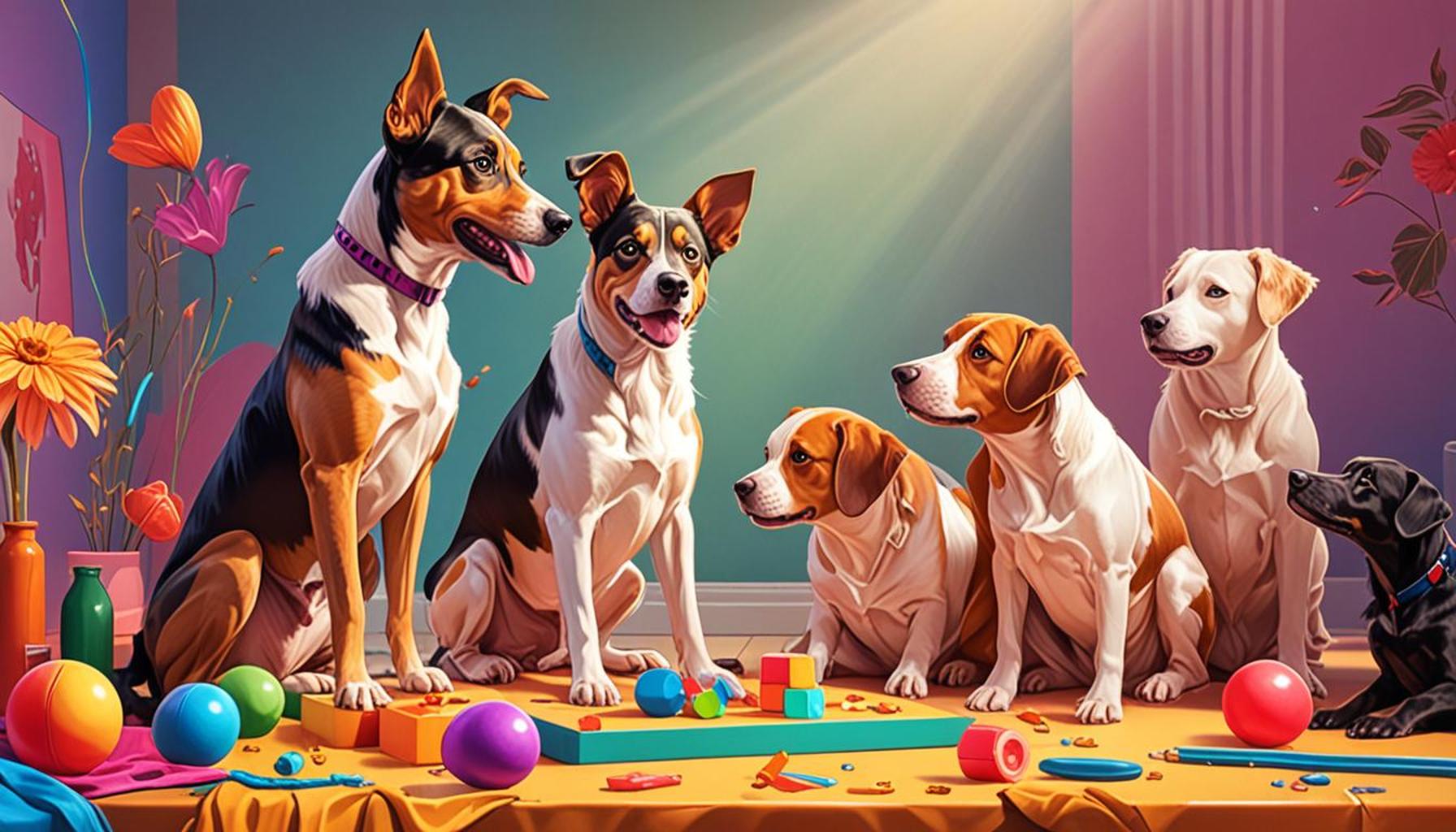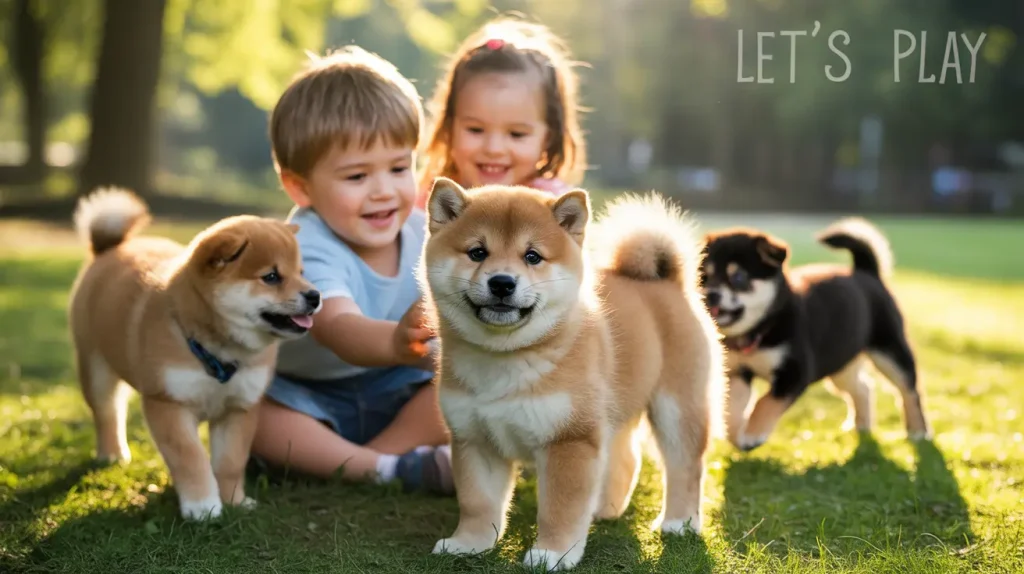The Importance of Socialization in Dog Training: Tips and Techniques

Understanding Canine Socialization
Socialization is a vital aspect of dog training, fundamentally shaping a pet’s behavior and their interactions with both humans and other animals. Early experiences form the foundation for a dog’s emotional resilience and overall mental health. If dogs are not adequately exposed to various stimuli, situations, and beings, they can develop issues such as fear-based reactions or aggression. This can create significant challenges that affect their quality of life and the safety of those around them.
Why Socialization Matters
Engaging in positive socialization practices helps dogs evolve into well-adjusted companions. A few key benefits include:
- Fostering Confidence: Dogs that are introduced to a variety of environments and situations—such as parks, busy streets, and public places—tend to develop a greater sense of confidence. For instance, a dog who regularly visits dog-friendly cafes will be more at ease around strangers and noise.
- Reducing Anxiety: Dogs that have been effectively socialized are generally less prone to anxiety when confronted with new experiences, such as meeting unfamiliar dogs or encountering unexpected sounds like fireworks. This proactive exposure can prevent panic and fearful behavior, leading to a more relaxed pet.
- Enhancing Obedience: Well-socialized dogs often exhibit better focus and responsiveness to their owners. Training sessions become more productive when a dog is comfortable in their surroundings and used to interacting with various stimuli. For example, a dog accustomed to being around other dogs may be less distracted during obedience classes.
Across the United States, dog owners commonly face the challenge of ensuring their pets receive adequate social interaction. Techniques to promote social skills can include attending puppy playgroups, daily walks through busy neighborhoods, and enrolling in supervised training classes. Every outing provides valuable lessons, reinforcing desirable behaviors while decreasing unwanted tendencies.
Beginner Tips for Socialization
To kick-start the socialization process for your dog, consider the following practical strategies:
- Start Early: The critical socialization window occurs between 3 to 14 weeks of age, when puppies are especially receptive to new experiences. This timeframe is the golden opportunity to introduce them to various sights, sounds, and smells that will set the stage for their future.
- Positive Reinforcement: Utilize treats and praise to reinforce desirable behavior during social encounters. For example, if your puppy remains calm while meeting a new dog, reward them with a treat or gentle affection to create a positive association.
- Gradual Exposure: Introduce new experiences slowly and in manageable increments to avoid overwhelming your dog. Gradually allowing your pet to explore different environments—like visiting a busy park during off-peak hours before attending a crowded event—can ease the adaptation process.
By prioritizing socialization, you not only cultivate a positive bond with your four-legged friend but also enhance their overall happiness and health. Encourage your pet to interact with the world confidently and constructively, paving the way for a more fulfilling life together. For those eager to explore more effective techniques and strategies for successful dog training, further resources can offer invaluable insights into this critical aspect of pet ownership.

DISCOVER MORE: Click here for insights on maintaining training consistency
Practical Techniques for Successful Socialization
Implementing effective socialization techniques requires a tailored approach based on your dog’s age, temperament, and individual needs. Here are some practical strategies to help enhance your dog’s socialization experience:
Explore Diverse Environments
One of the best ways to expose your dog to a variety of stimuli is by taking them to different locations. Frequent outings to places such as parks, dog beaches, and pet-friendly shops can provide valuable experiences. Each location presents unique scents, sounds, and various people and animals. For instance, while visiting a dog park, your pet can interact with other dogs, helping them learn appropriate play behaviors and social cues. Additionally, walking through busy urban streets allows your dog to become accustomed to the hustle and bustle of everyday life.
Attend Training Classes
Enrolling your pup in group training classes is another effective way to enhance socialization. In these settings, dogs can interact with other dogs in a controlled environment under the guidance of a professional trainer. This can lead to improved communication and coordination between you and your dog, as you both learn to navigate social interactions together. Look for classes that emphasize positive reinforcement techniques to create a positive and enriching learning experience.
Utilize Playdates
Organizing playdates with other trusted dogs can significantly aid in developing social skills. Start with calm and friendly dogs who have been socialized properly themselves. Always maintain supervision during these interactions to ensure that the play stays safe and enjoyable. You can also cautiously introduce your dog to new animals, gradually working towards more challenging encounters. This controlled exposure fosters a sense of security, allowing your dog to build trust in their social instincts.
Implement Positive Reinforcement
Throughout the socialization process, utilizing positive reinforcement is crucial. Reward your dog with treats, toys, or praise when they engage in desired behaviors during social interactions. For example, if your dog approaches another dog calmly and plays nicely, be sure to acknowledge and reward this behavior immediately. This creates a strong association between positive social behavior and rewards, motivating your dog to repeat those actions in the future.
Avoid Negative Experiences
It’s essential to approach socialization with caution to prevent negative experiences. If your dog has a bad encounter—such as being startled or bullied by another pet—the fear induced from this interaction can have lasting effects on their behavior. Therefore, exercising discretion when choosing social situations is key. Monitor your dog closely and be ready to intervene if they seem uncomfortable or overwhelmed.
By combining these techniques and observing your dog’s responses, you lay the groundwork for not just a well-trained pet, but also a well-socialized companion for years to come. Setting priorities early in their lives can maximize positive encounters and minimize reservations, paving the way for a fulfilling relationship with your canine friend. The right socialization practices can create a confident, happy, and obedient dog who can thrive in various environments. With the rich tapestry of possibilities that socialization offers, you can help your pup become a cherished member of your family and the community.
The Role of Positive Reinforcement in Socialization
One of the fundamental aspects of effective dog training is positive reinforcement. This technique not only helps in teaching basic commands but also plays a crucial role in socializing your dog. Rather than focusing on punishment, rewarding your dog for desired behaviors encourages a sense of security and openness to new experiences. Incorporating socialization exercises with treats or verbal praise can promote confidence and reduce fear during interactions with other dogs or unfamiliar environments.
Gradual Exposure to Various Environments
When working on socialization, it’s essential to introduce your dog to different settings and situations gradually. Start with less overwhelming environments, such as quiet parks or pet-friendly stores, and slowly progress to busier areas. This approach allows your dog to adjust while minimizing anxiety. Regular exposure to various sounds, sights, and smells can significantly enhance their adaptability and social skills, ultimately leading to a well-rounded pet.
Importance of Early Socialization
Socialization should begin as early as possible, ideally during the critical socialization period, which extends from three to fourteen weeks of age. Puppies that experience a variety of social situations during this phase are often more sociable, balanced, and confident as adults. Engaging puppies in positive interactions with various people, pets, and environments during this time establishes a strong foundation for their future behavior.
Monitoring Body Language
Understanding canine body language is pivotal in recognizing how your dog is feeling during interactions. Signs of stress, such as cowering, tail tucking, or excessive barking, can indicate that your dog is overwhelmed and needs a breather. Learning to read these signals will not only help in training but also ensure the safety and comfort of your pet during socialization exercises.
Building a Strong Owner-Pet Bond
A dog’s socialization experience greatly benefits from a strong bond with its owner. Trust is crucial for a dog to feel comfortable exploring new surroundings or meeting new people. Engaging in trust-building activities such as playtime, training sessions, and shared experiences can strengthen this bond, making your dog more open to socialization efforts.
DISCOVER MORE: Click here to learn about how pet adoption can enrich childhood experiences
Building Confidence Through Socialization
Socialization not only enhances a dog’s ability to engage with other animals and humans but also plays a pivotal role in building their confidence. Confidence is a key trait in a well-adjusted dog, as it helps them navigate various situations without fear or anxiety. Here are some effective techniques to foster your dog’s confidence through socialization.
Introduce New Experiences Gradually
When introducing your dog to new experiences, it’s best to do so gradually. Sudden exposure to unfamiliar environments, loud noises, or fast-moving objects can be overwhelming. Begin with less daunting situations and progressively work your way up. For example, if your dog is apprehensive about loud sounds, start by exposing them to quieter environments before introducing them to busier locations with louder noises, such as a busy park or a pet store during peak hours. This approach allows your dog to adjust at their own pace.
Encourage Interaction with Different People
Email invites, contact through apps, or social media groups can help you arrange safe social encounters with different types of people. For instance, meet-ups with families, elderly individuals, or children will provide your dog with diverse social cues. When exposing your pup to new people, be sure to let them approach on their terms and at a comfortable distance. Reassuring and encouraging your dog can enhance their comfort level, promoting positive interactions.
Provide Sensory Enrichment
Utilizing sensory enrichment can significantly enhance your dog’s socialization experience. This includes providing experiences that engage their senses, such as varying textures, smells, and sounds. Activities such as hiking through different terrains or even visiting places with new smells, like farmers’ markets, can stimulate your dog’s senses while encouraging exploration. These experiences foster a sense of curiosity, which is fundamental in helping them become more adaptable and comfortable in a variety of settings.
Practice Basic Commands in Varied Settings
Reinforcing basic commands like “sit,” “stay,” and “come” in a variety of locations is essential for honing your dog’s focus amidst distractions. Each environment presents different stimuli that can affect your dog’s behavior, so practicing commands in diverse settings can fortify their learning and responsiveness. Regular practice in new environments will ensure that your dog becomes a compliant and confident companion, able to respond to commands regardless of outside distractions or new surroundings.
Utilize Safe Margin Techniques
When engaging in social situations, the concept of a safe margin is crucial. This involves maintaining a comfortable distance during introductions, especially during initial meetings with other dogs. If a potential interaction seems daunting, retain a distance where your dog feels secure, gradually decreasing this gap as their confidence grows. This not only helps them understand social cues but also teaches them to recognize and respond to their comfort levels.
By focusing on building confidence through consistent and positive socialization techniques, you can create a well-adjusted dog that thrives in various social contexts. Remember that each dog’s journey is unique, and progress may vary. Patience and persistence will go a long way in helping your pup develop into a social and confident member of your family.
LEARN MORE: Click here for insights on pet allergies
Conclusion
In conclusion, socialization is an essential pillar of successful dog training that not only enriches your dog’s life but ensures their emotional well-being and adaptability in various scenarios. By prioritizing early exposure to a range of experiences, environments, and people, you create a strong foundation that fosters confidence and resilience in your canine companion. The techniques discussed, such as gradually introducing new situations, engaging in diverse interactions, and incorporating sensory enrichment, are practical and effective tools that can transform the way your dog perceives the world around them.
Moreover, the journey of socialization is unique for every dog; thus, patience and understanding from the owner are crucial. Remember to celebrate small victories and progress while respecting your dog’s individual pace. As your dog grows more social and confident, you will likely find greater joy in shared activities and outings, strengthening the bond between you and your pet.
Ultimately, a well-socialized dog is not only a happier companion but also a responsible member of society. They are better equipped to handle stressful encounters and display more agreeable behaviors. As you embark on this rewarding path of socialization, keep your focus on creating positive experiences and reinforcing desired behaviors. Not only will your dog thrive, but you will also set the stage for many enjoyable years together. For more comprehensive guidance on making the most of your dog’s training journey, consider exploring local training classes or resources that specialize in socialization techniques.



